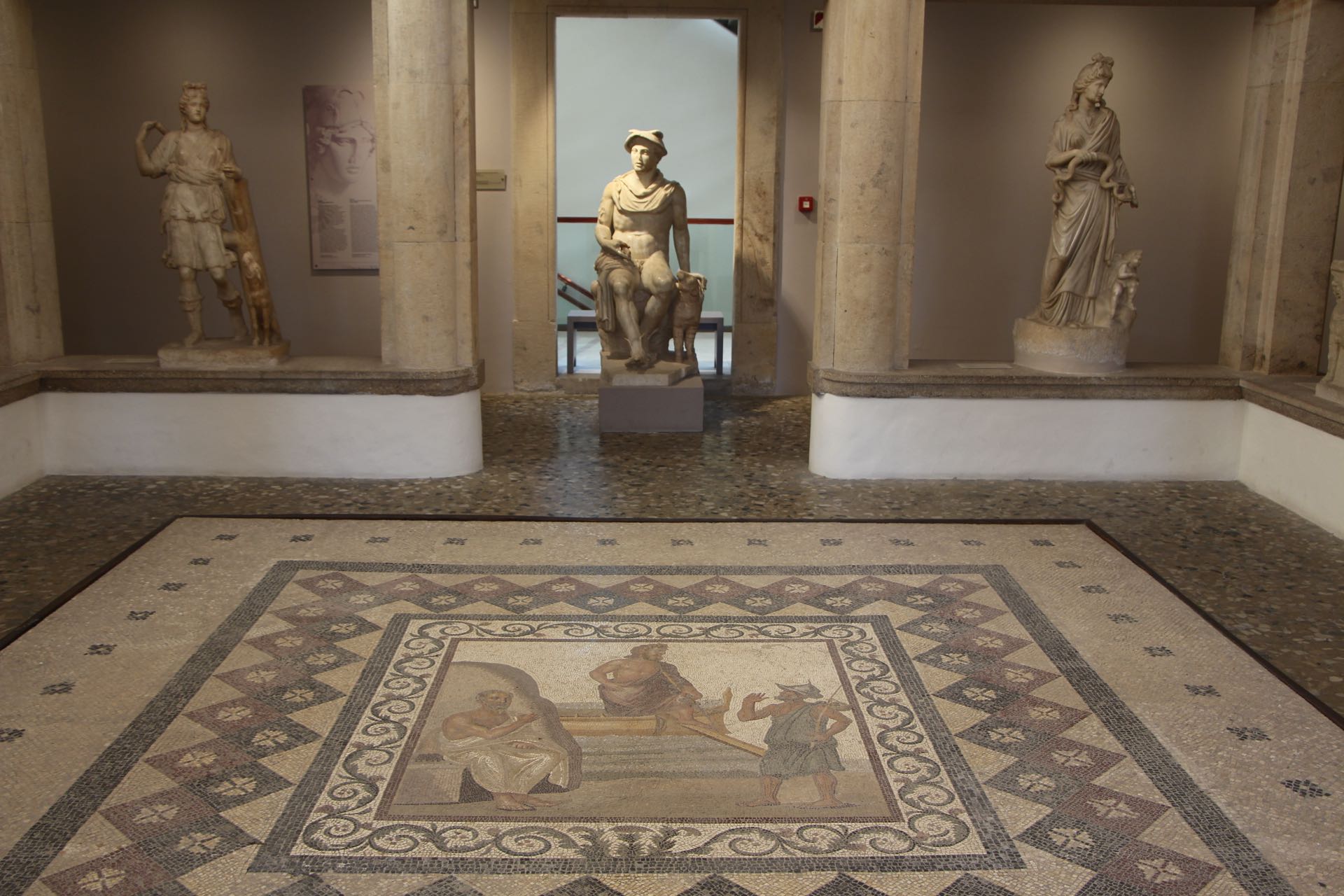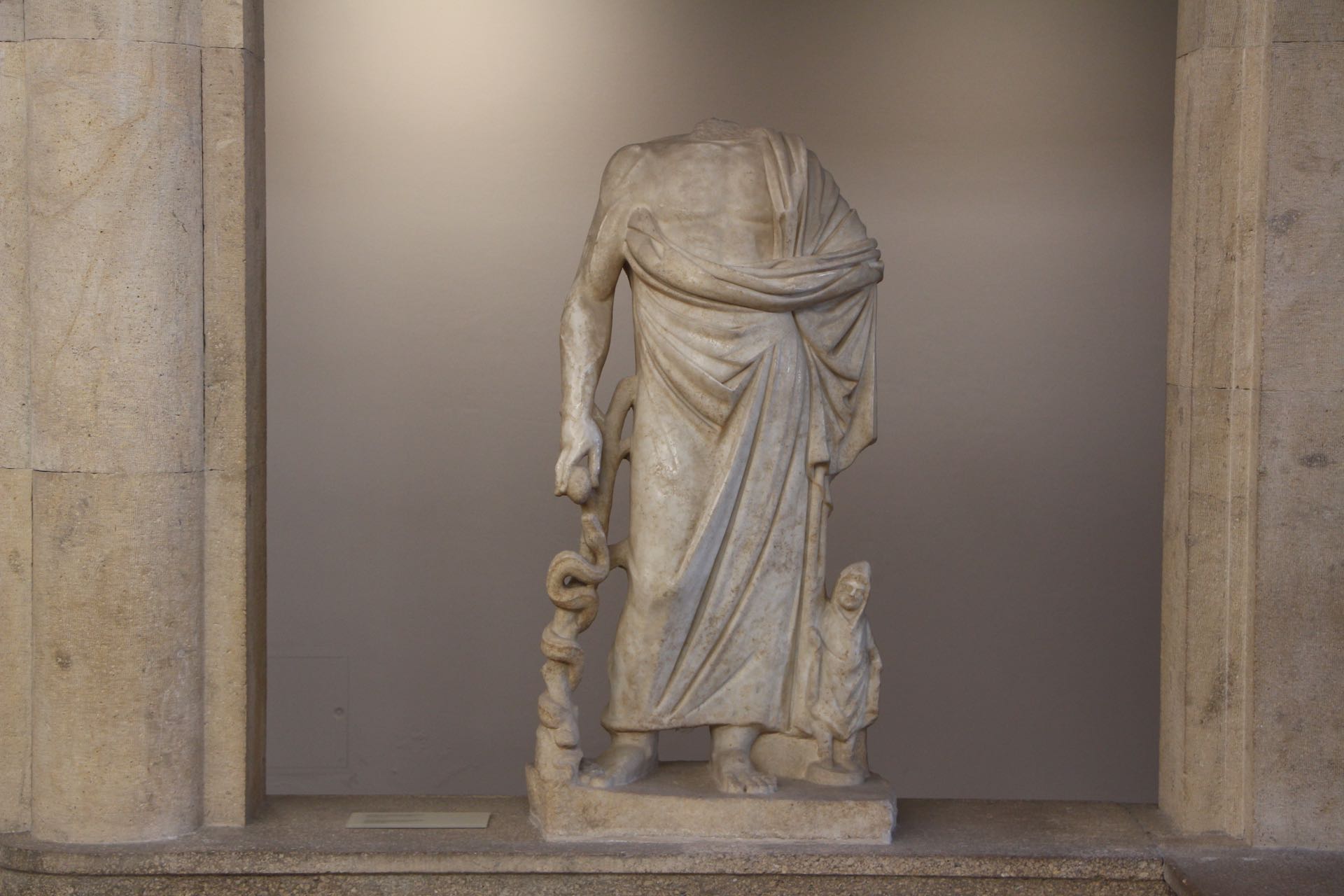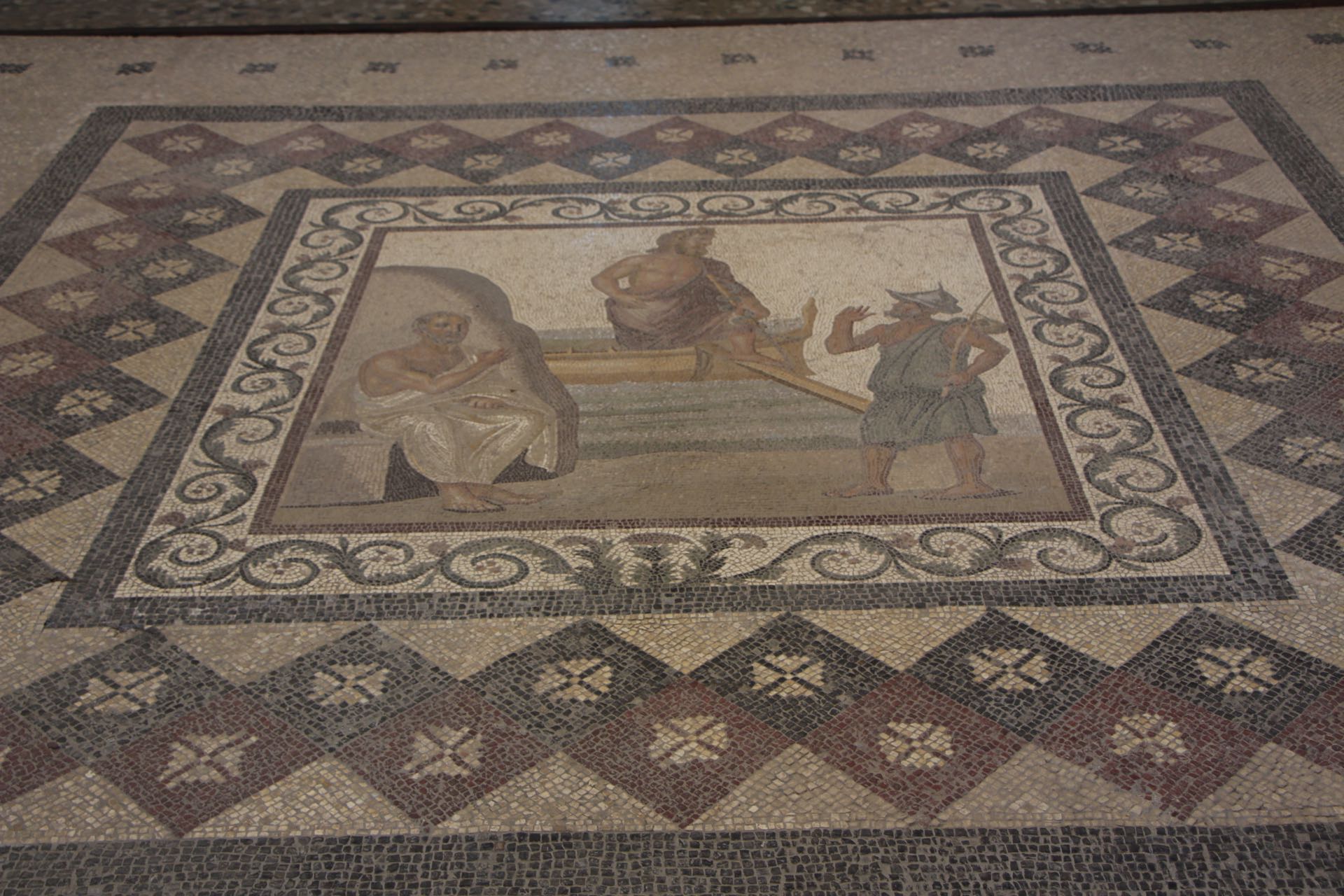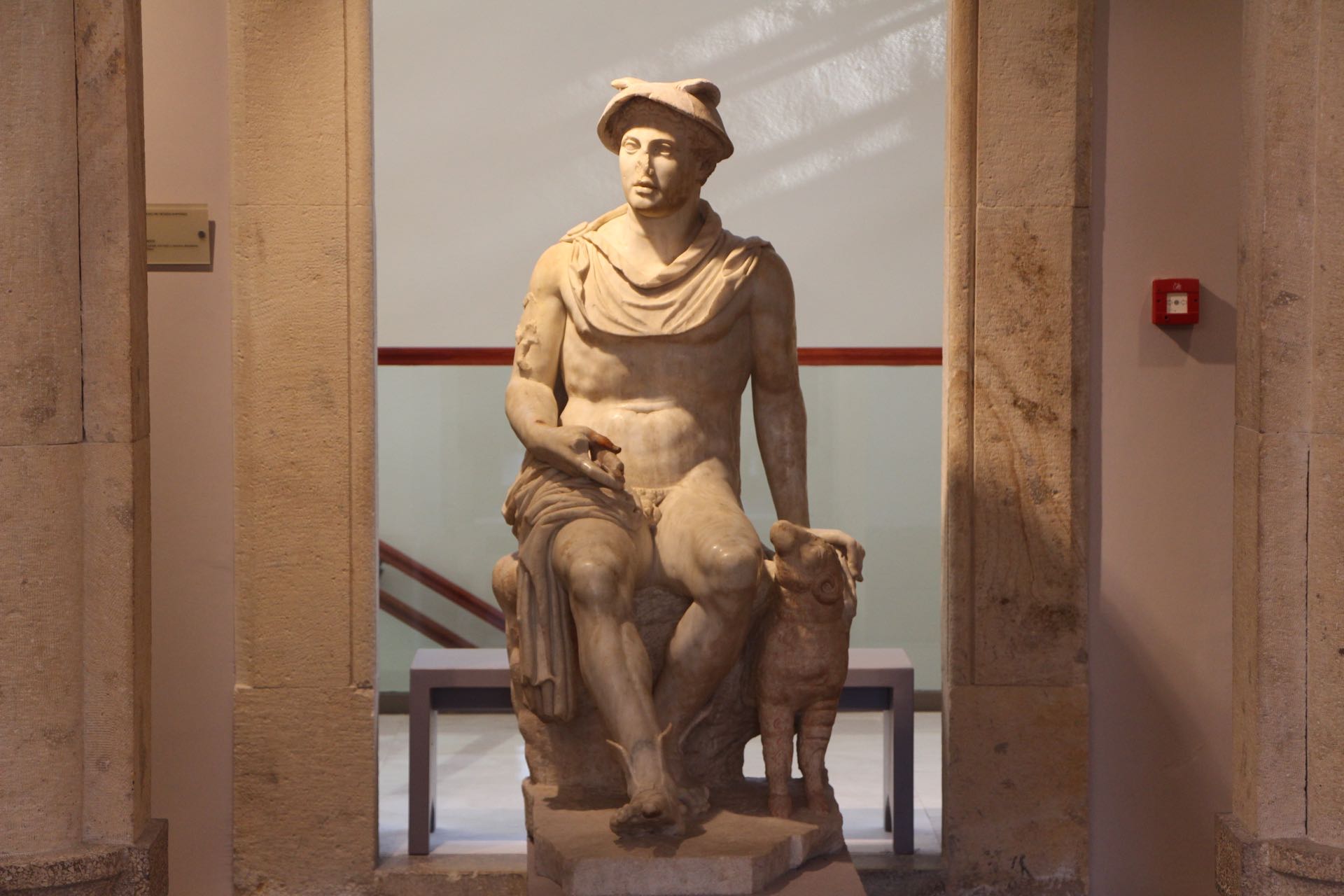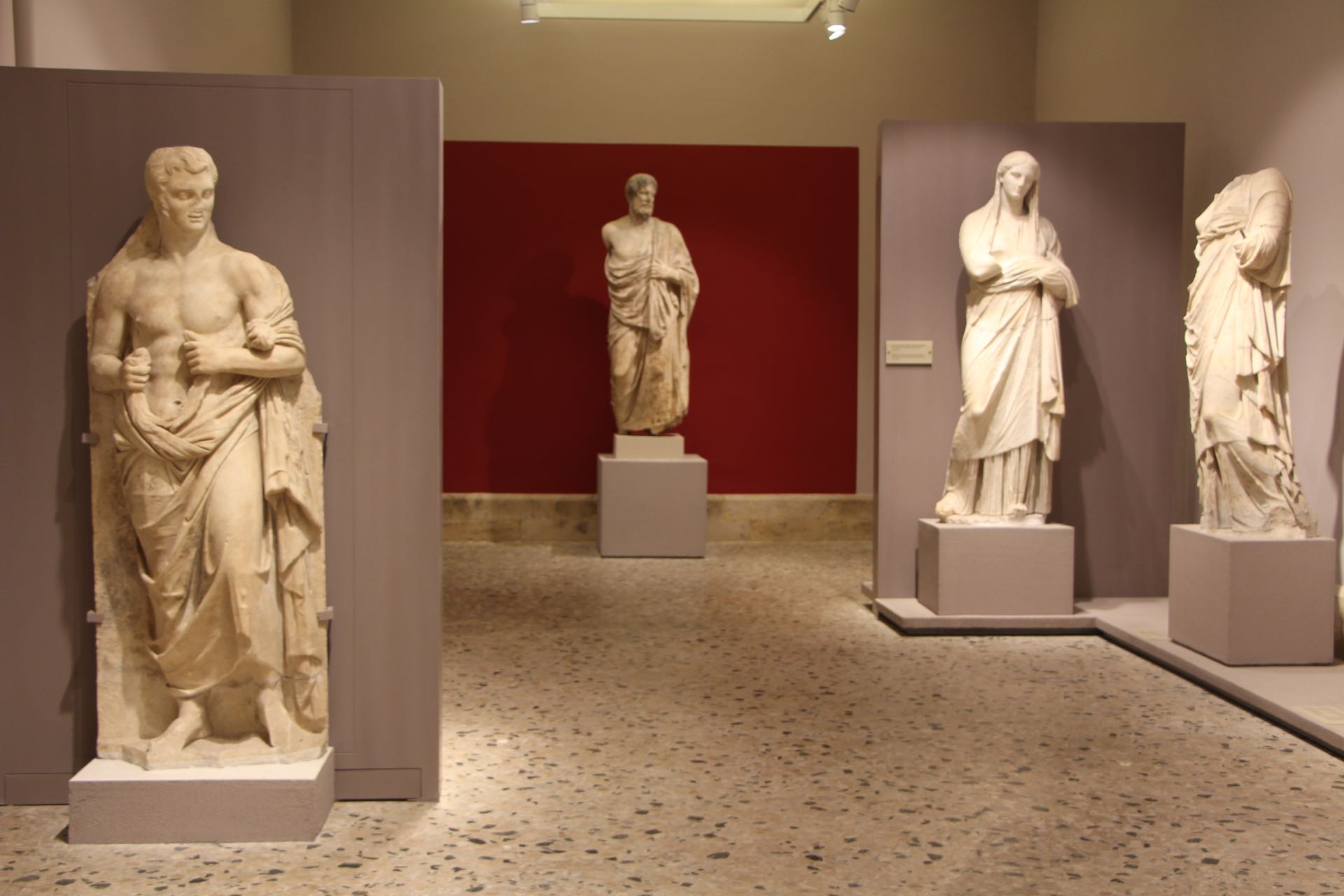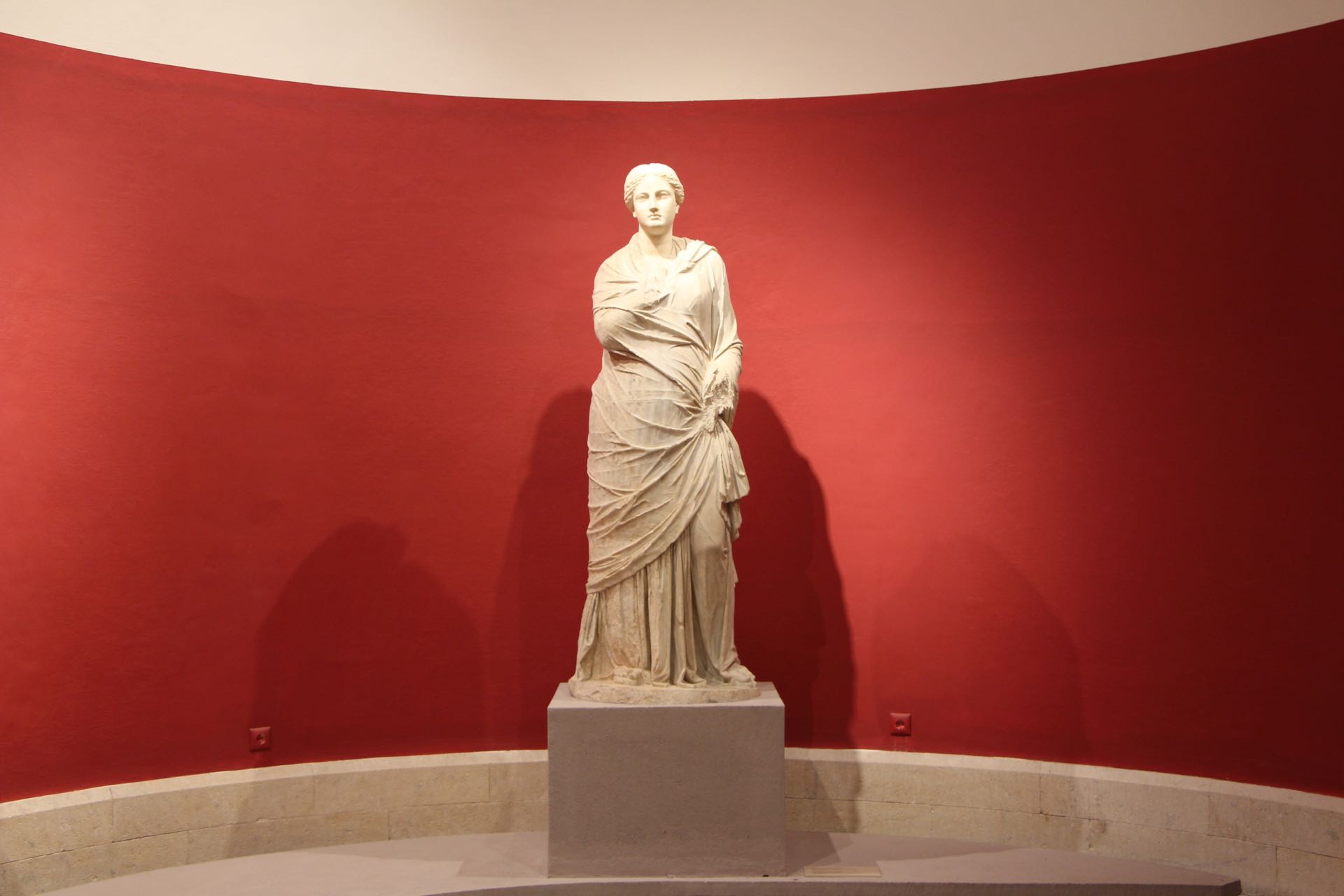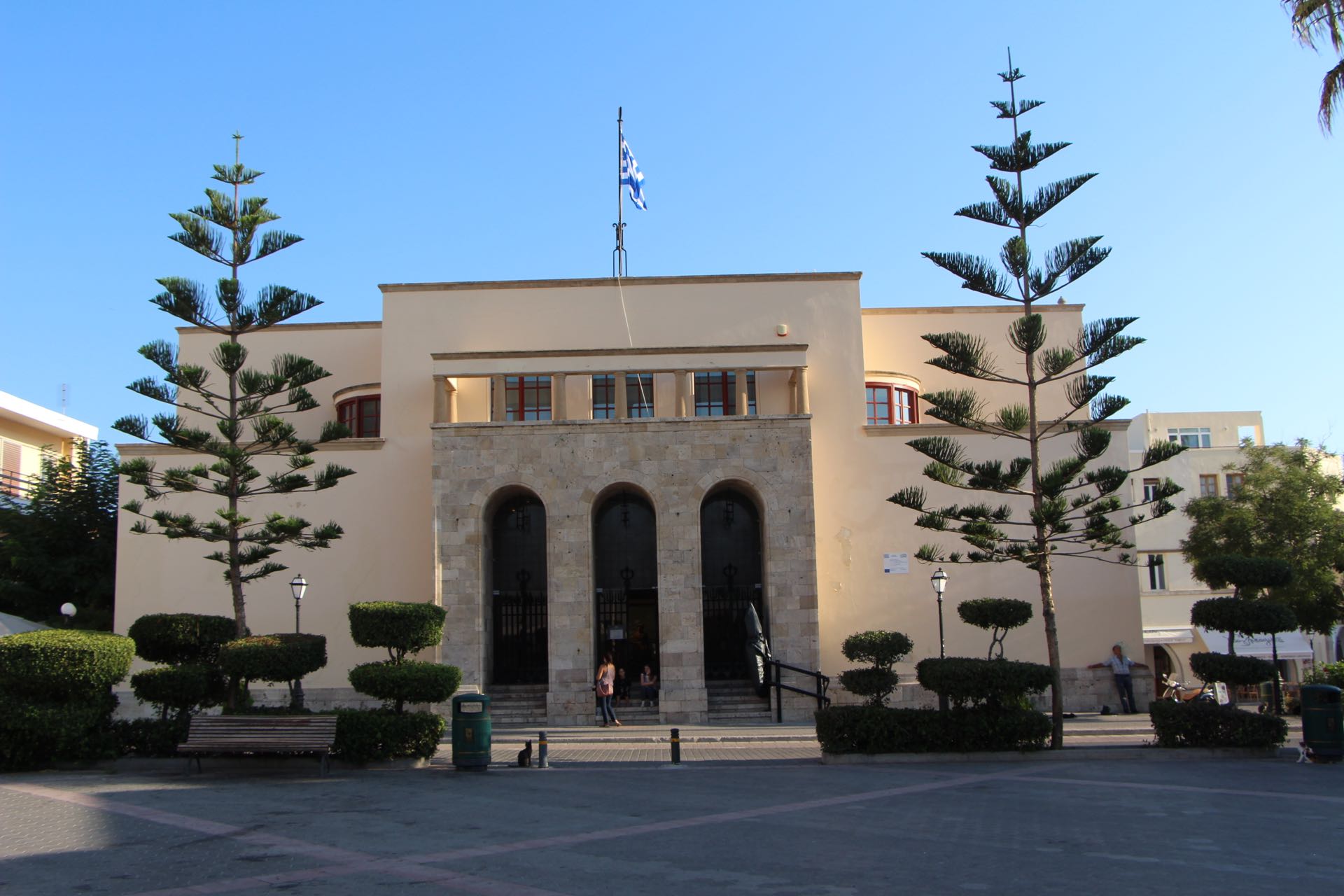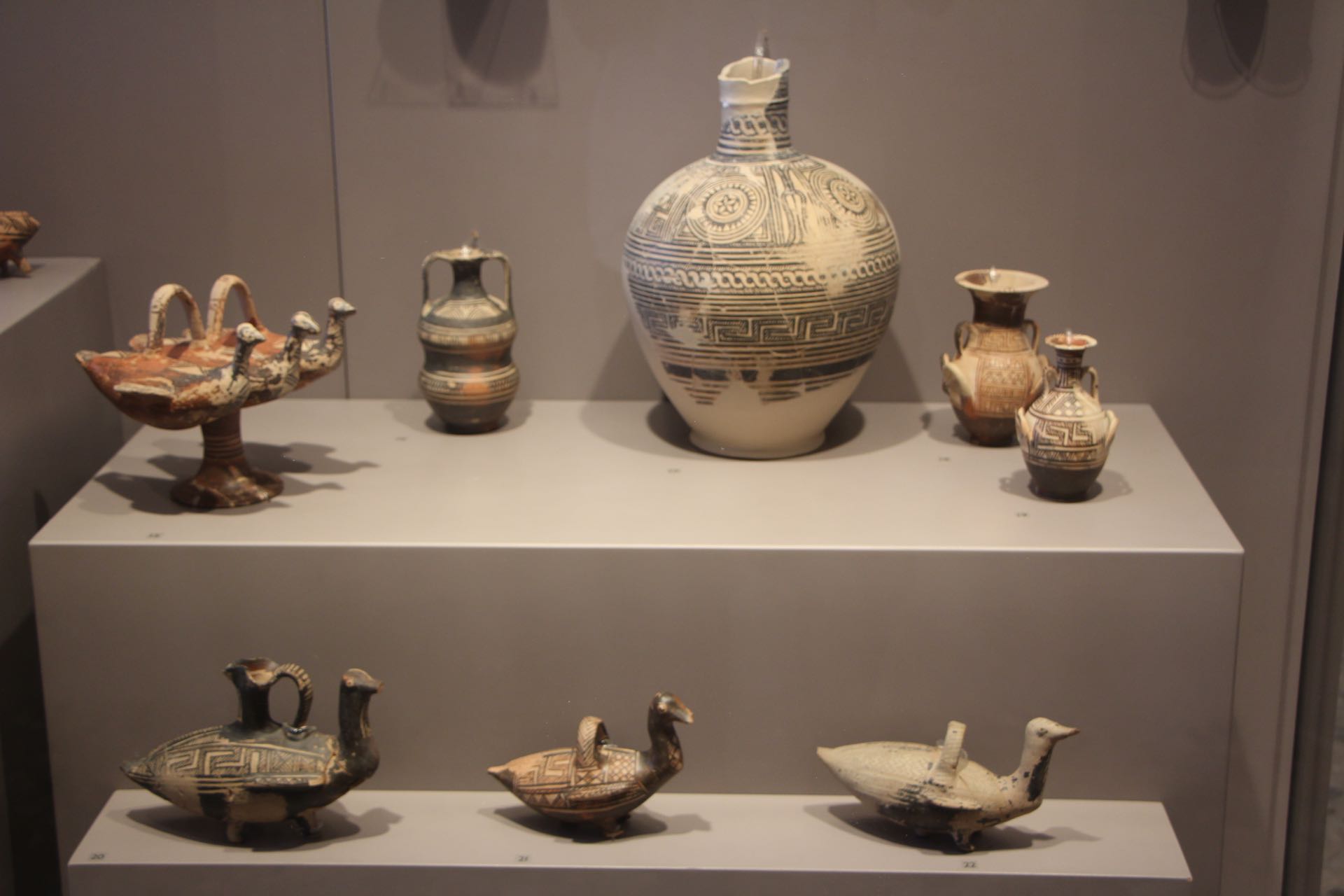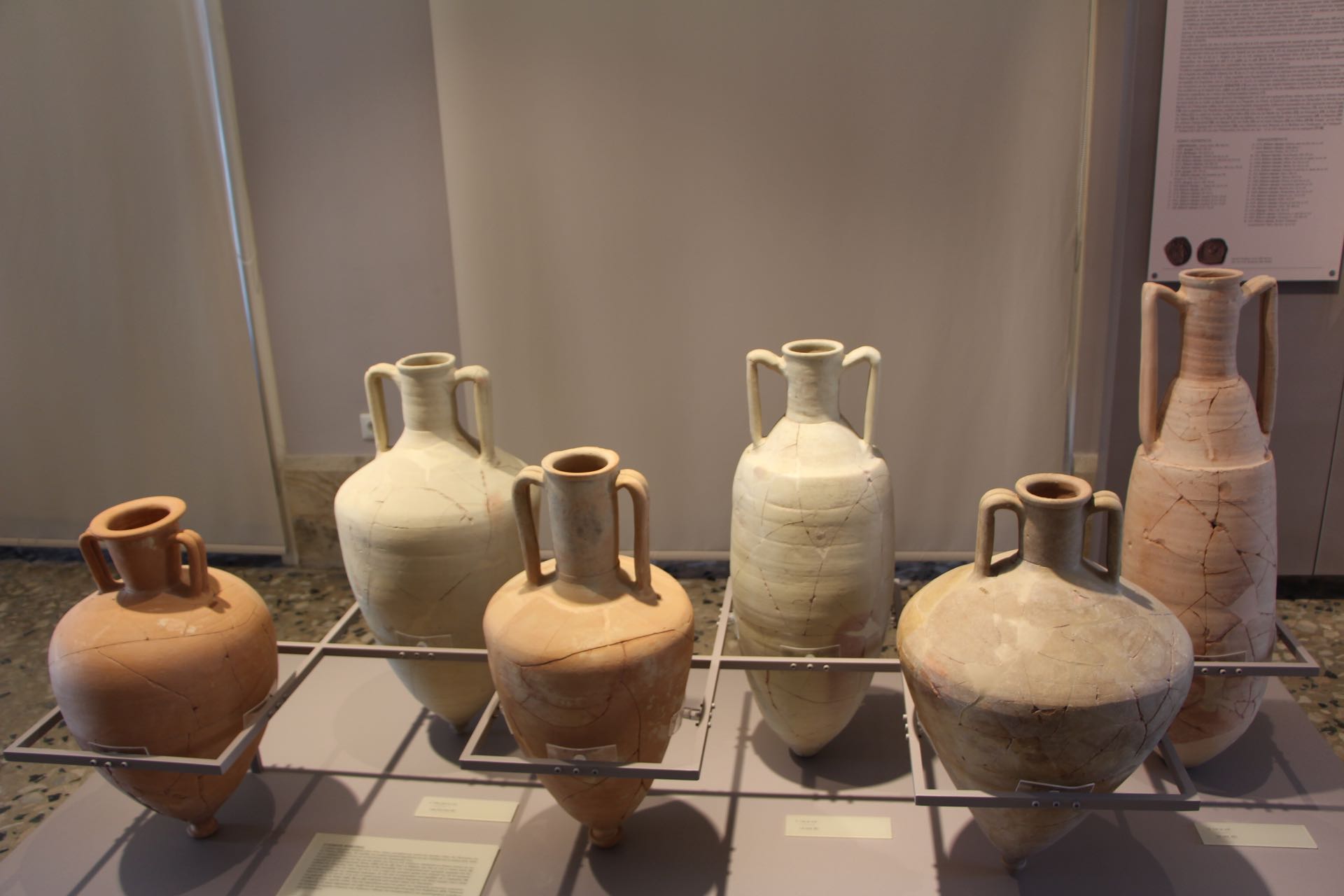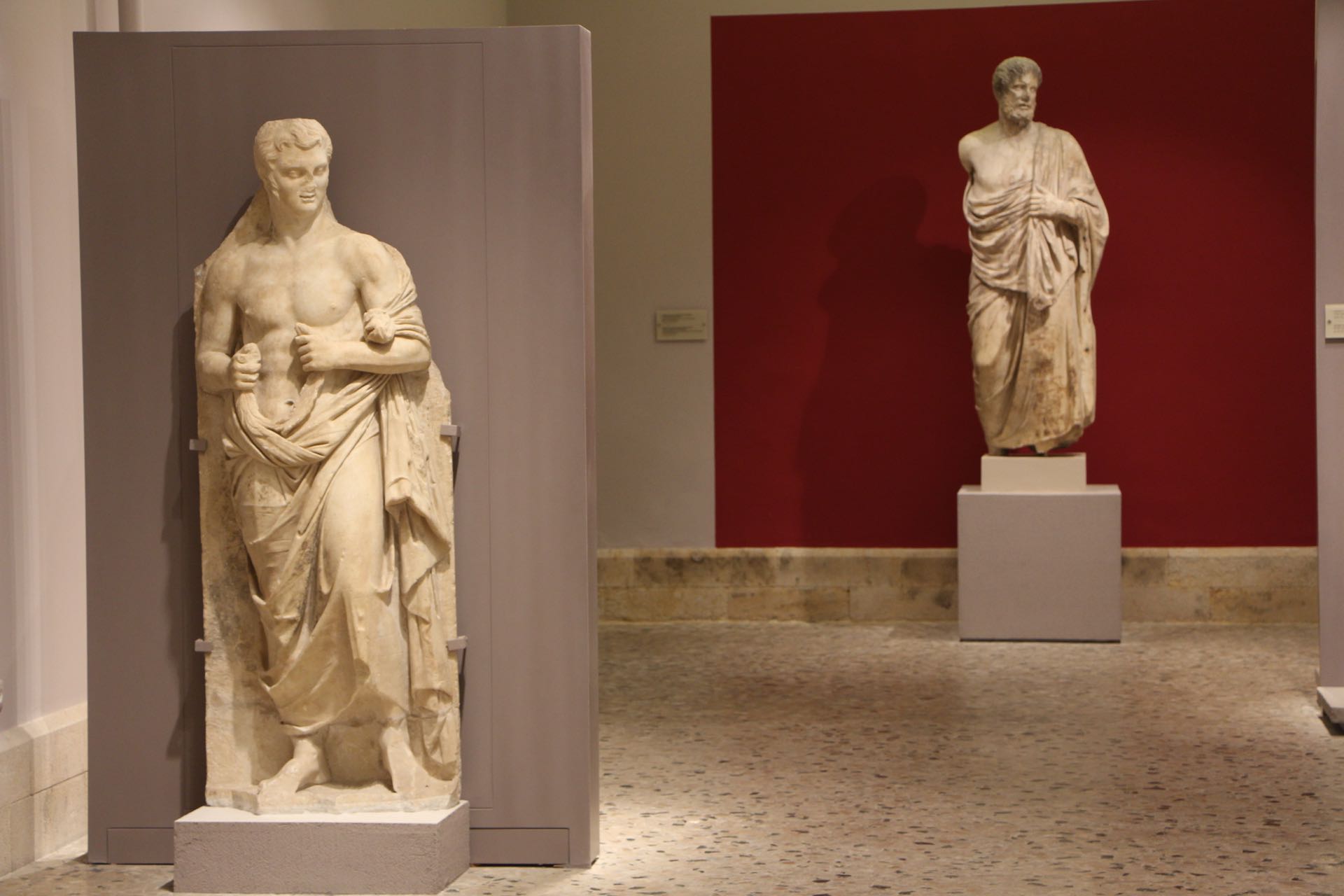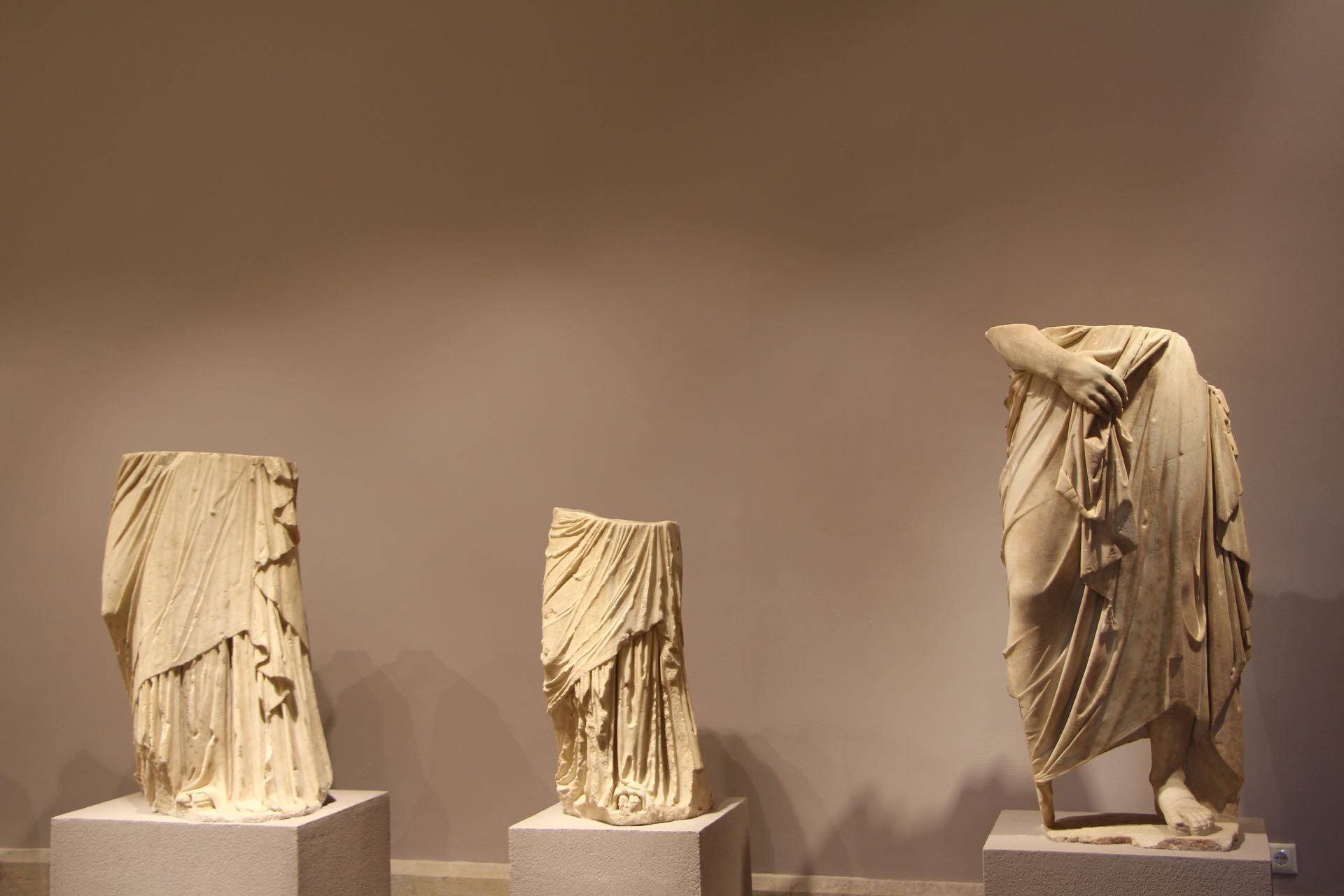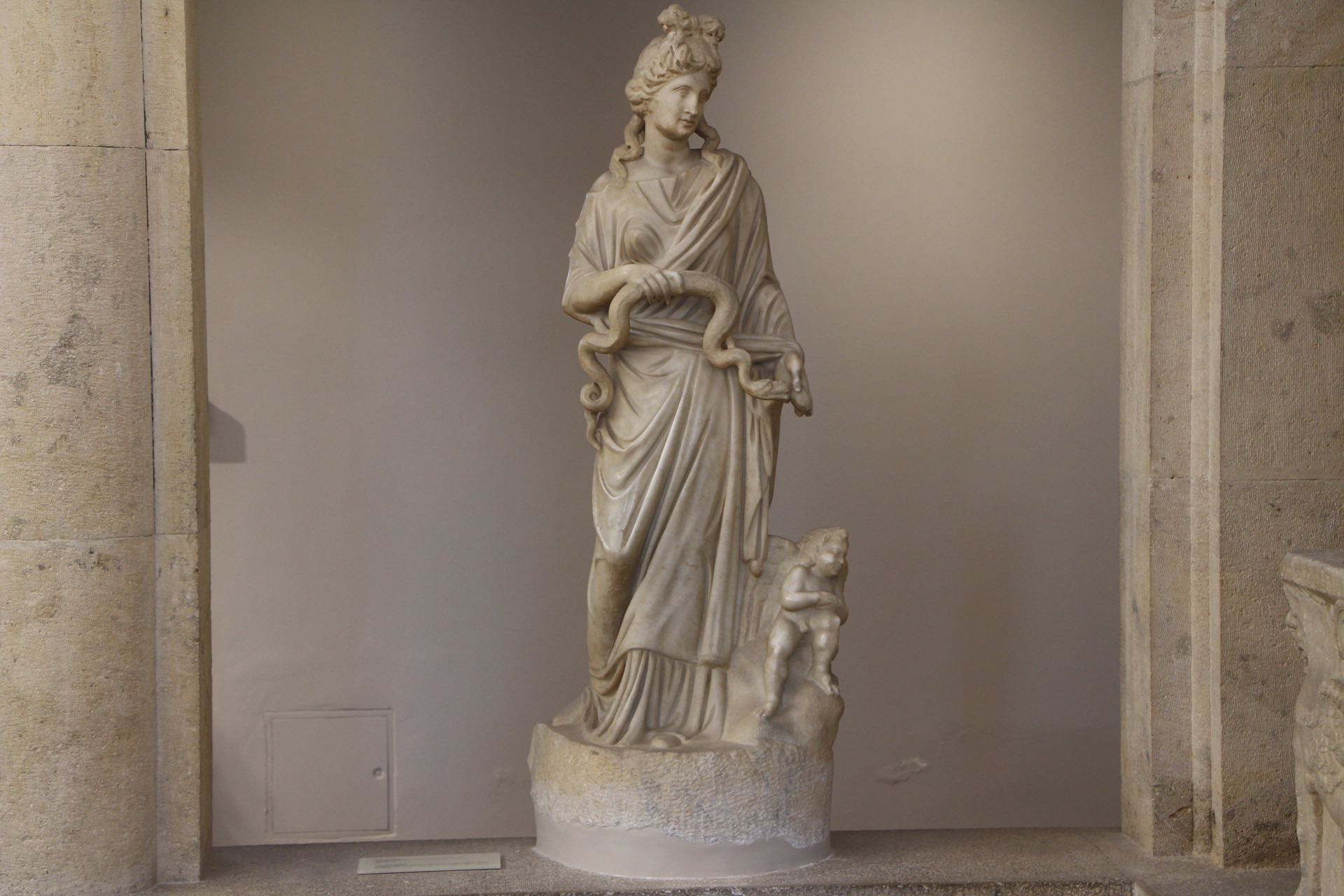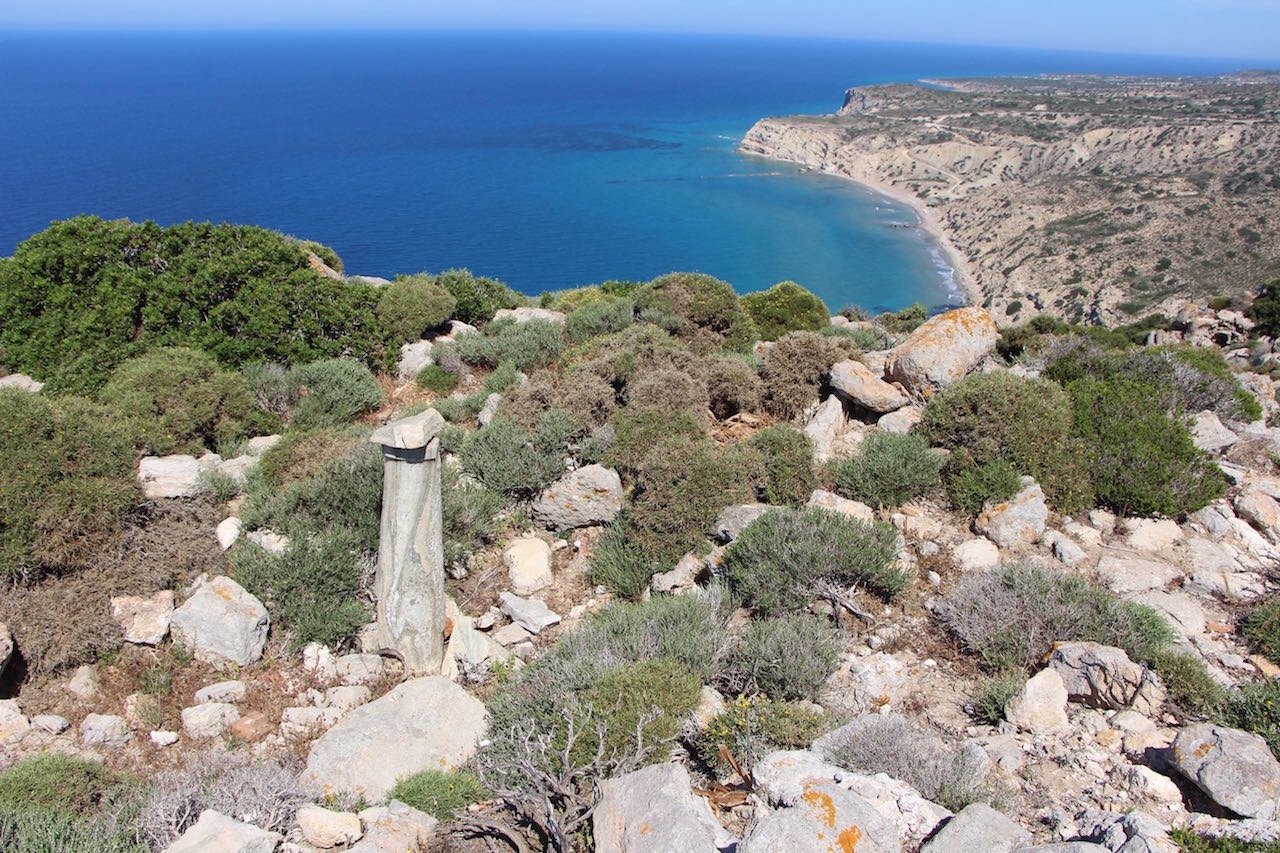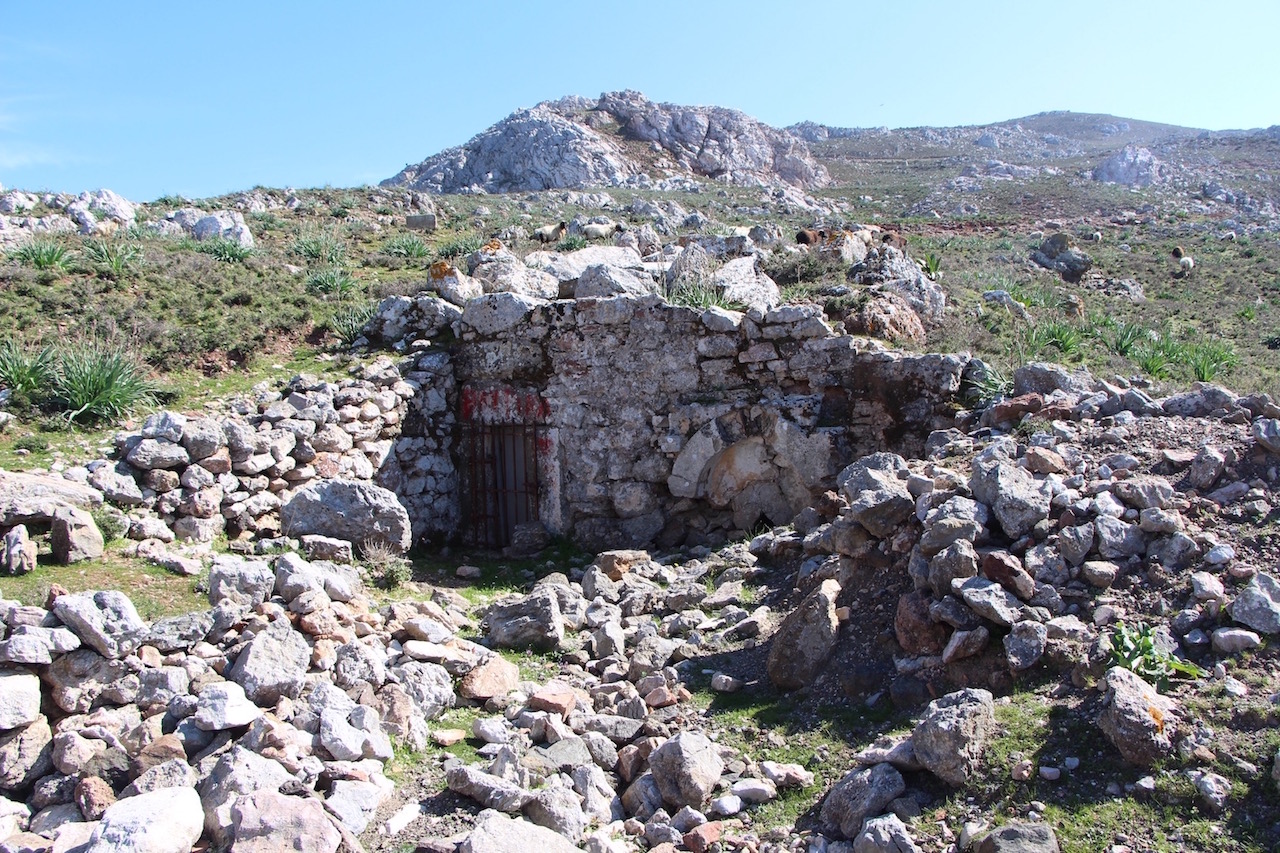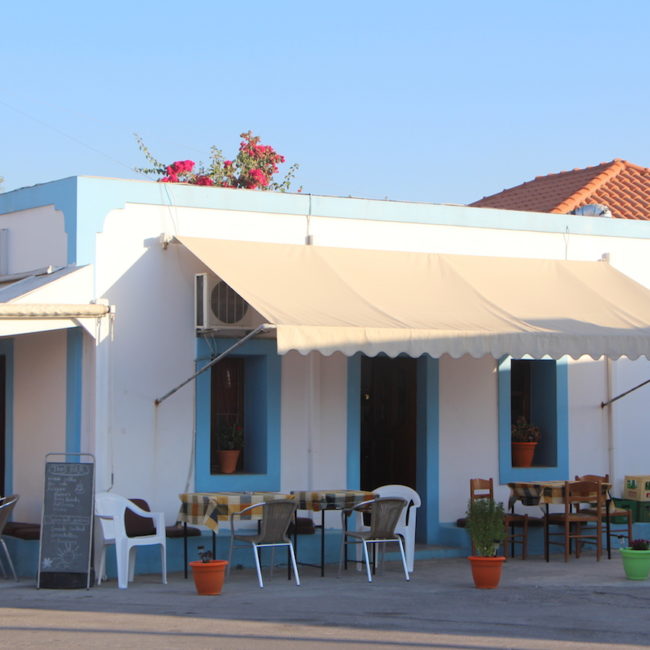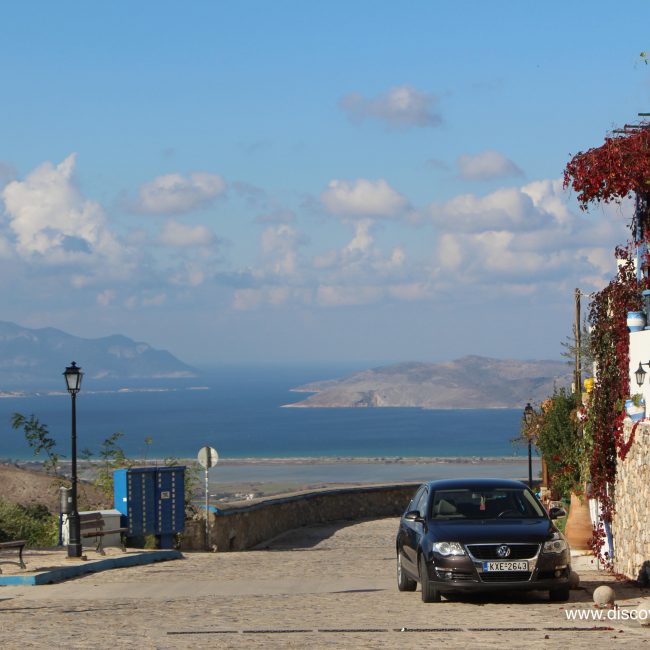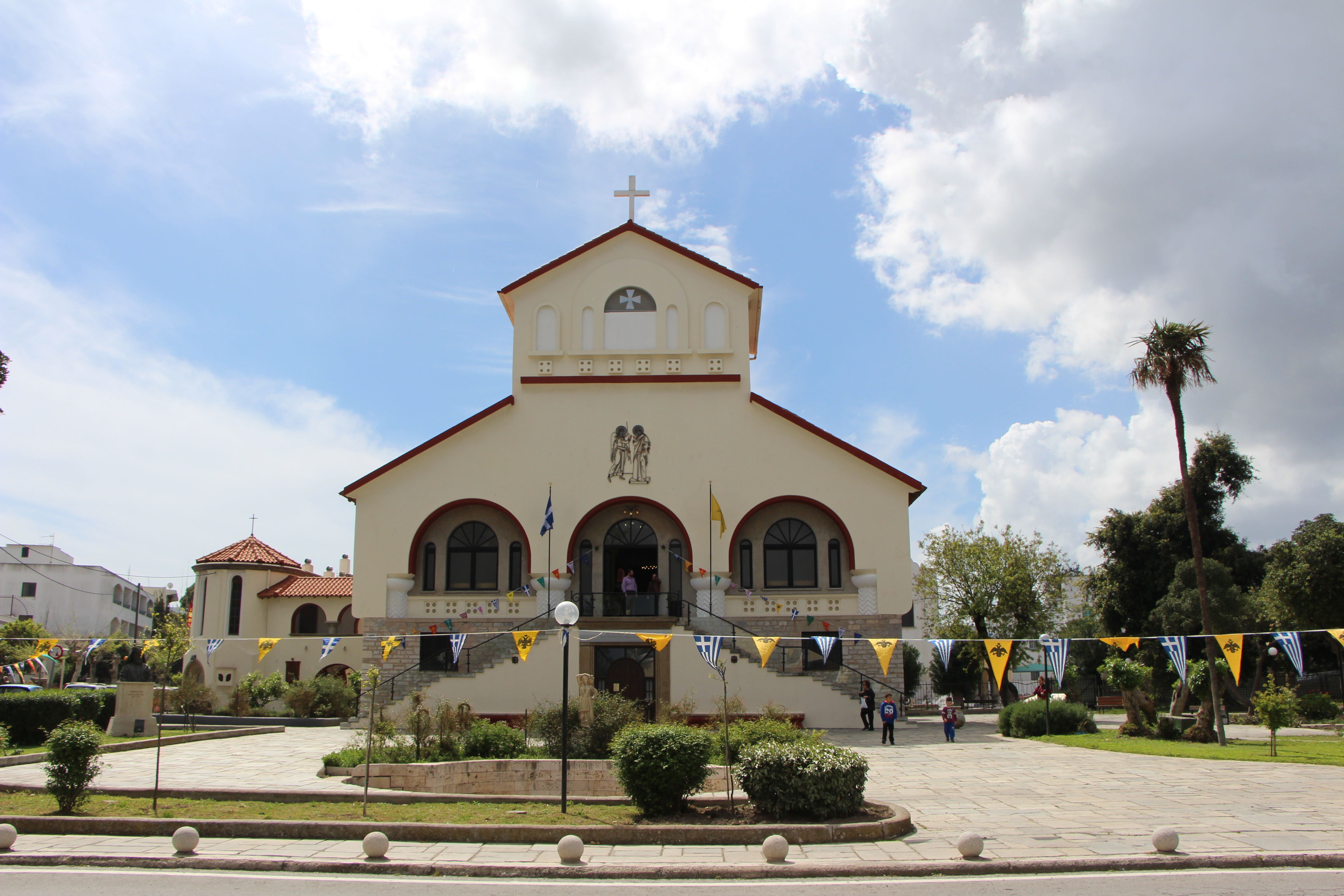
The building housing the Archaeological Museum
The Archaeological Museum of Kos is housed in a building in Eleftherias Square and is one of the last major public buildings constructed by the fascist regime of Italy in the period that followed the devastating earthquake of 1933. It was designed by the Italian architect Rodolfo Petracco and built from 1935 to 1937, while the redevelopment of the east side of the building was studied by Mario Paolini in 1937. It dominates the historic town square, situated west of the medieval gate of the forum, the extended archaeological site of the ancient Agora and the quarter of the ancient harbour. It is a two-story edifice, with an imposing facade of three arched entrances, in imitation of the Roman Thermae. The style of the building, known as fascist style, makes direct reference to the period of purification of forms, which was applied to the public buildings and structures during the twenty-year fascist regime. It was listed as a monument in 1986.
The building consists of a basement, a ground floor, a middle floor level in the SE part of the building and an upper floor. The base of the revetment is made of local travertine (amygdalopetra), crowned with moulding (kymation). Similar coating borders the windows and doors. The emblematic three-door entrance in the middle of the south and main facade of the building forms an imposing portico (porch), while three identical staircases, also made of amygdalopetra, lead to the iron-clad entry doors. A rectangular peristyle balcony crowns the upper part of the portico, whilst two spacious terraces complete the main facade of the building. The eastern side side of the building has six windows. The west side of the building is longer than the east because of its circular curve towards the northern tip of the basement and ground floor. The spacious roof forms a wide terrace with a curved balcony.
The antiquities are displayed on two levels of the Archaeological Museum, although the second level, housing the large collection of Mycenaean and Geometric-period vessels of Kos, along with many small earthen statuettes, ornaments and other funeral offerings, is still not open to the public.
Ground floor
The ground floor displays mainly sculptured works that were brought to light during excavations in the city of Kos (Agora, West archaeological area, Altar of Dionysos, Roman Odeon, the Roman House etc.).
The historical exhibition is housed in the South Hall.
The peristyle Atrium dominates the space inside the building, replicating one of the characteristic architectural features of the ancient town residences. Housed in glass blocks and encased in reinforced concrete beams, you can admire the sculptural decoration of the Roman House of the “Rape of Europe” and the beautiful mosaic, from the Hellenistic period (2nd-3rd century AD), of the so-called House of Asclepius (found to the South of the Agia Paraskevi church), representing the arrival of Asklepios in Kos .
The West Hall hosts distinctive examples of the island’s ancient sculpture, included in a sculptural exhibition expressing the dynamics of the city-state, from the 4th to the 1st century BC. Make sure that you get to admire the imposing statue of a man, supposedly Hippokrates.
The East Hall displays the ancient sanctuaries of Kos: the early sanctuaries, the Asclepeion, the sanctuary of Demeter in the city, the sancturay of Demeter in Kefalos, the sanctuary of the Eleusinian deities at Kyparissi in Amaniou, the sanctuary of Aphrodite and Hercules in the quarter of the ancient harbour and Anatolian deities worshiped in Kos.
First floor
Upstairs, three bright galleries are formed on the sides of the walls that encircle the indoor atrium of the Archaeological Museum.
In the West Hall, findings ranging from the prehistoric to the classical period of Kos are displayed. The exhibition titled “Travelling to the distant past” depicts daily life on the Acropolis of Serayia in Kos Town, the art of clay, land and sea as source of inspiration, metalwork and miniature art from the Late Bronze Age to the Geometric period, the realm of the Homeric poems during the Geometric period in Kos and interactions with Corinth and Athens during the archaic and classical periods.
The South Hall presents everyday aspects of private and public life of the Hellenistic and Roman city of Kos.
The East Hall houses an exhibition titled “Stories from the underworld”, showing burial customs of the early Bronze Age to the Roman times, with selected representative findings from the ancient cemeteries, including clay figures of humans and animals as consolation to the living and company to the dead.
Take your time to appreciate a number of beautiful works dating from the Hellenistic up to the Roman era of which I give you a small sample.





